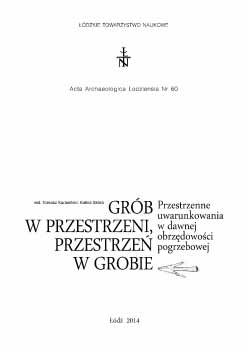Uwagi o funkcji i symbolice konstrukcji wczesnośredniowiecznych grobów w obudowach kamiennych
Remarks on function and symbolic meaning of constructions of Early Medieval graves in stone-settings
Author(s): Michał DzikSubject(s): Archaeology
Published by: Łódzkie Towarzystwo Naukowe
Keywords: graves in stone-settings; stone cists; symbology of the grave; Drohiczyn; mortuary house
Summary/Abstract: This paper discusses the issues of the meaning and function of constructions characteristic for so called ‘groby w obudowach kamiennych’ – early medieval flat boulder- lined graves with cobblestones covering the burials (fig. 1, 4). Burial sites with these kind of cists are quite rare but were discovered in different parts of Europe; in Poland concentrations of them are known from the Mazovia and the basin of the eastern part of the lower Bug river (fig. 2). In the first of the above-mentioned regions, these constructions are dated to the period between the mid 11th century to the beginning of the 13th century. In the second region – from the last third of the 11th century to the mid 14th century. In the literature of the subject, several explanations of the function of the discussed grave constructions were proposed. They were interpreted as structures buttressing the walls of pit-graves or maybe preventing the burials against animals. According to another hypothesis, the idea of building such cists arose in the times of Christianization of funeral customs, when inhumation replaced cremation, and stone constructions were meant to stop the deceased from rising. An opposite proposal recognises in these cists the imitation of Jesus Christ’s grave, peddled by the Church. In the most recent proposition, the discussed cists are depicted as marks of high social position, popular amongst the elites in emerging states. In this article arguments defying the abovementioned hypotheses were presented. In light of comparative studies and new data on the genesis of the aforementioned graves in eastern Poland, it seems, that these cists are the emanations of ideas according to which graves are symbolic houses built for the dead. Another probable function (apotropaic, mark of status) might aktually have had a secondary meaning, which could be given to these constructions in some regions during the evolution of funeral customs.
Journal: Acta Archaeologica Lodziensia
- Issue Year: 2014
- Issue No: 60
- Page Range: 87-101
- Page Count: 15
- Language: Polish

